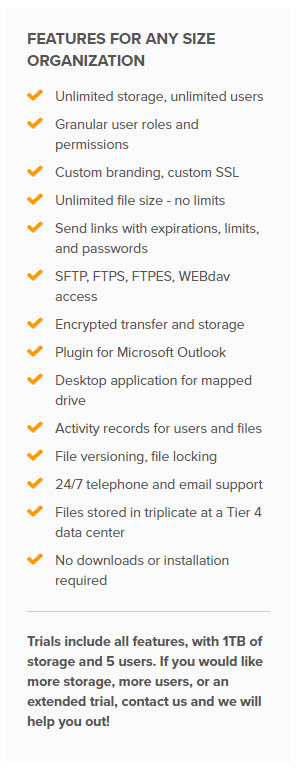How much do you spend on customer acquisition?
If the answer is “too much,” you’re not alone.
When you combine the cost of research, marketing, and advertising with onboarding new customers—not to mention the prospective customers who ultimately don’t sign up for your product or service—a business often discovers that they actually lose money on customers’ first annual contracts.
While your pricing model is at the core of your business and is what the customer sees, there are internal pricing strategies that can be applied to different models depending on your goals. Let’s take a look at a few.
1. Set Sights on Your Desired Profit Margin
This seems obvious, but it’s still important to note. Sometimes, MRR (Monthly Recurring Revenue) growth is as simple as calculating your costs, adding your target profit margin, and setting the resulting sum as your price.
By pricing your product at exactly what it’s worth, plus profit, you ensure that you aren’t losing revenue with each new contract. Of course, this simplified strategy does not account for factors like competitor pricing, perceived value, and price sensitivity, which need to be taken into account—but the exercise offers a solid starting point to get the ball rolling in the right direction.
Once you have an idea of how much your product or service is worth, and how much you need to charge to make your desired profit from it, you can start exploring additional approaches to shape a pricing strategy that works best for your business.
2. Aim to Provide Higher Value
Sometimes, you’re simply thinking too small.
In his book, The 10x Rule: The Only Difference Between Success and Failure, author and entrepreneur Grant Cardone explains that to achieve massive success, you must set massive goals. Take your original goal and multiply it by 10. Then also multiply your effort to achieve your goal by 10.
Sounds crazy? Maybe not. Applied to SaaS, viewing pricing as a product of perceived value pushes businesses to focus on improving the product or service they provide and understanding customers’ needs.
It pushes businesses to be better, to be worth what they’re charging.
If the value you provide customers is worth ten times the price they pay, not only will they stay, they’ll also happily pay more for upgrades or new features. If they are an expanding organization themselves, they’ll be willing to pay for more users.
Make spending an easy decision for your customers, and your MRR can grow in the right direction.
3. Offer Free Trials
Customer support and engagement platform Zendesk is one of many SaaS companies that utilizes a free 30-day trial to both entice customers and maximize MRR.
Free trials are a great way to unlock New Business MRR, especially if you’re diligent about following up with users at the end of a trial to encourage converting to a paid account. If your product satisfies their need and is worth the cost, odds are they’ll upgrade, adding to your revenue.
Most SaaS free trials last 30 days, but depending on your business, you can offer more or less time, or restrict the trial based on usage. File storage service SmartFile offers a free 14-day trial with restricted storage space and number of users, though all of their features are available during the trial.

Free trials can be scary. Providing a product for free may be costly, especially when not all trial users convert. If your business model is one that can consistently absorb free users for a limited time, however, free trials are a must-try in your pricing strategy.
4. Charge Unsustainably Low Prices or Even Nothing
While we’re on the topic of free trials, consider whether a freemium/underpriced strategy is right for you. Can you let some users enjoy a useful version of your product for free or at a discount, indefinitely?
Yes, freemium pricing erodes revenue—your paid users will need to cover the cost of keeping underpaying users on board. However, this strategy has worked well for Slack and Dropbox, so it shouldn’t be completely off the table.
The important thing with this strategy is to make sure that users with free or low-cost accounts are still receiving something useful and enjoyable. If users don’t see value in your most affordable subscription, they certainly won’t want to pay for more features
On the other hand, if users do see value in the free/discounted version of your product and find that they need more usage, storage, features, etc., they’ll be willing to upgrade or pay for more features, bringing that MRR growth to your door.
Investment app Robinhood accomplishes this by offering an opportunity to trade stocks commission- and payment-free. Robinhood can absorb this cost by making money from interest on uninvested funds, payments for order flow, and, you guessed it, contributing “gold” members who pay a monthly fee to be able to buy on a margin and trade after-hours.
Offering your product at a lower-than-sustainable, per-user rate is risky, but it increases the chances of beating competitors to a market. Used correctly, it is a maker of giants in the SaaS industry.
If charging little or nothing for your hard work isn’t your cup of tea, you could go in the complete opposite direction by charging more.
5. Charge Luxuriously High Prices
You probably remember the story of the “I Am Rich” app, which cost $1,000 in the early days of Apple’s App Store. The app did little besides display a red ruby on the user’s screen.
Eight people bought the app in one day. Then Apple removed it from the store.
How many more people would have dropped $1,000 “just because”? It’s hard to say, but some customers obviously want to pay premium pricing simply because they can. It feels exclusive, high quality, and luxurious.
While this pricing strategy isn’t for everyone, it certainly works for some. If your business is well known or used by high-profile companies, you may be able to charge more, as customers are drawn to using the same products and services as other successful entities.
You can also offer a premium tier in your pricing strategy, with all of the best features you can offer and perhaps some special recognition. Encouraging high-roller customers to brag with their dollars can be one of the easiest paths to revenue growth for the right business.
6. Ride Down the Demand Curve
In 2018, digital magazine service Texture dropped its $14.99 subscription plan price to $9.99.
While the change was motivated by a need to streamline their pricing plans, and likely assisted by Apple’s acquisition of the service around the same time, the effect is one well known in SaaS: Price Skimming.
Like our luxury spenders above, early adopters in technology are often excited about new offerings and willing to pay top dollar for them, spending more than the actual worth of a product simply for the right to show off “having it first.”
Businesses can take advantage of this by charging a premium during launch, attracting big-spender customers, then tapering the price of the product down to a more realistic cost, capturing the rest of the market.
7. Charge for Necessities
You’ve experienced this before: paying for a product or service, only to find that you’re locked into paying for compatible features, add-ons, or supplies necessary to enjoy full functionality.
While this method sounds like it would turn customers off, quite the opposite is happening in the video game world. Customers happily purchase new and better consoles from their favorite companies every time they roll out, and continue to purchase the games, controllers, and other accessories necessary to fully enjoy their gaming experience.
Circling back to our freemium success stories, WordPress offers website building for free. But if users want to remove “wordpress.com” from their page’s URL and have a business email that matches their page address, they’ll have to pay for these and other features. WordPress users pay even more for premium, advanced business features and the complete removal of the WordPress branding from their site.
Given that WordPress hosting is one of the most popular options for web applications today, users are willing to try out the premium version of this service too.
It’s important to make sure that even your most basic offering is valuable to your customers, but don’t rule out this opportunity to increase MRR until you’ve thought it through. If your business offers something to customers that can be charged per item as they need it, you not only increase revenue, you also allow users to customize their use of your product or service.
As Always, Put the Customer First When Adjusting Your Pricing Strategy
Pricing is a delicate task. Approach too timidly, and customers might assume your product lacks value. Come across too aggressively, and they may think you’re just trying to gouge them for cash.
How do you find the right balance? Keep your customers’ goals in mind, and you’ll find the answer.
Robust subscription billing software can track sales and display them by month, quarter, or year to allow you to see which pricing strategies work, and which don’t.
The software can also display heat maps of gross and net sales, providing a clear picture of which customers are contributing the most to sales and which are at risk of churning, so you can intervene. Since this information is pulled directly from the billing system in real-time, it provides a higher level of financial accuracy in the context of your subscription revenues. Powerful billing systems like Stax Bill support robust financial reporting and revenue recognition capabilities providing your business with a precise financial system of record in regard to subscription revenues. Thus, the insights provided by this type of software, on potential churn, are a good ‘source of truth.’
If your product has an upgrade you think less engaged customers would find helpful, reach out and tell them about it to maximize retention.
Growth is essential to the health of your business. Don’t miss out on an opportunity to review your pricing strategies and calibrate them toward success.








